Sustainability. It’s a buzzword that’s been around for awhile now, with the current version of the concept first popping up in 1989’s Brundtland Report (also known as “Our Common Future”).
Since its publication, sustainable business practices have been on the rise, with more and more companies joining the environmental movement. Whether it be a few small steps or a far-reaching, fully developed sustainability plan, business owners are recognizing the need for change.
Consumers also have the power to build a more sustainable economy by shopping local and supporting small businesses. Visiting nearby brick-and-mortar retailers is a great option, but Amazon makes it easy to find local businesses online, too.
There has never been a better time to make your Amazon business — or Amazon purchases — more sustainable. Let’s dive into the details.
What is sustainability?
As a society, we’ve been working towards becoming better stewards of the earth for years. Yet we still have a long way to go before the damage we’ve caused can be healed. One of the ways we can get closer to our sustainability goals is by understanding exactly what sustainability means.
According to the Environmental Protection Agency (EPA), sustainability comes down to a single guiding principle:
“Everything that we need for our survival and well-being depends, either directly or indirectly, on our natural environment. To pursue sustainability is to create and maintain the conditions under which humans and nature can exist in productive harmony to support present and future generations.”
Simply put, sustainability involves focusing actions on satisfying current needs, while making sure future generations will be able to meet their needs as well.
Examples of sustainable business practices
Though there are many ways to make your Amazon business sustainable, the following areas tend to be the ones most businesses focus on:
- Waste reduction: For example, you can go paperless with e-billing or by saving documents to a hard drive rather than printing them out.
- Pollution prevention: This means buying and using energy-efficient devices, like laptops, light bulbs, and printers.
- Clean and renewable energy: Though a bit more difficult to achieve, you can move towards renewable energy by installing solar panels, or using wind energy to power your office.
- Water conservation: Start by doing a water audit to see how much water your business is actually using, then make changes (like installing low-flow or dual-flush toilets) accordingly.
- Green the planet: If you’re travelling for business, offset your carbon footprint using a site like Co2nsensus.
- Sustainable products and packaging: If you make electronics, this may mean creating a product that’s more energy efficient. Or you could make your packaging sustainable by using compostable or recyclable materials.
- Look out for the future: You can look out for future generations by involving your employees in the development of your sustainability program, or by explaining to customers how to properly discard your product and/or its packaging when they’re done with it (ie. which pieces are compostable and/or recyclable).
Implementing just one small sustainable change to your business practices can make a far-reaching difference.
Amazon’s Climate Pledge Friendly program
Sellers can take steps toward sustainability through Amazon’s Climate Pledge Friendly initiative. This labeling program is designed to help customers discover and shop for more sustainable products. Amazon shoppers can filter their search results for products that qualify for the initiative.
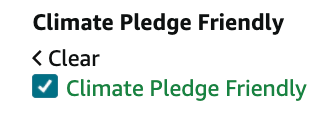
Products that meet at least one or more of the 19 different sustainability certifications — including Amazon’s own Compact by Design certification — can receive a Climate Pledge Friendly label on their listing, signifying that the products help preserve the natural world or reduce the carbon footprint associated with order fulfillment.

How to get your products certified for the Climate Pledge Friendly program
In order for your Amazon products to qualify, you must earn one or more of the required third-party sustainability certifications or Amazon’s own Compact by Design certification.
Take a look at Amazon’s list of Climate Pledge Friendly certifications to see if your products meet their requirements. If you believe your products qualify, you must reach out to the appropriate certifier to get your product approved. Certifiers include government agencies, independent laboratories, and non-profit organizations who have partnered with Amazon for this initiative. Sellers must also ensure their certification is validated and confirm that the certifier has provided relevant product-level data to Amazon.
While there is no fee to participate in the Climate Pledge Friendly program, there may be fees associated with each sustainability certification.
Compact by Design
To qualify for Amazon’s Compact by Design certification, your products must have best-in-class “unit efficiency.” Amazon uses product attributes such as item package dimensions, item weight, and the number of units per container to calculate the unit efficiency of a product.
Amazon sets category thresholds to recognize the most efficient products within each product category. If your product has a higher unit efficiency than the category threshold, it qualifies for the Compact by Design certification.
FBA Donations program
This is a new program that enables sellers to donate unwanted inventory to select U.S. charities instead of disposing of the items. It is considered a planet-friendly alternative designed to give your overstock, returned, or unwanted products a new life.
Amazon has partnered with Good360 to distribute donated inventory across its network of nonprofit organizations. This program is great for sellers because it allows them to help others in need and reduce waste, and it may even provide business owners with some tax benefits.
FBA Grade and Resell
FBA Grade and Resell is another sustainable alternative that prevents returned products from going to waste. With this new program, Amazon allows sellers to relist returned inventory — that can no longer be listed as new — as used. You can now recoup some of the money lost from a return and prevent paying to dispose of or return the item back to you.
Amazon will evaluate each item that is submitted into the program and properly grade it for you as Used – Like New, Used – Very Good, Used – Good, or Used – Acceptable. Once it is graded, Amazon will create the listing for you.
Why is sustainability important for your Amazon business?
First and foremost, sustainability is important because customers care about it. More and more buyers are willing to adjust their purchasing habits if it means lowering the impact their purchase has on the environment. That means you have the potential to gain new customers (and their dollars) simply by taking steps to make your Amazon business “green.”
There are some other important financial benefits to building a more sustainable business:
- Reduced business costs: Going green can mean lower utility bills for your office (or home office), reduced waste management expenses, and fewer printing-related costs with paperless operations.
- Access to grants and tax credits: Eco-conscious organizations are eligible for programs and tax breaks that could help offset purchases of energy-efficient equipment, like solar panels.
- Brand awareness: By marketing your product’s green-ness and your eco-friendly business practices, you could attract media attention and draw customers away from your less eco-minded competitors.
Certifying your sustainable business
There’s another way to communicate your commitment to sustainability to customers and communities: becoming a mission-driven Benefit Corporation, or B Corp. Unlike traditional businesses, B Corps are legally required to demonstrate how their operations support sustainability and/or social change, and are held accountable by their shareholders.
Famous B Corps like Allbirds, Prose, and Patagonia prove that a commitment to sustainability needn’t limit the quality of your products or your business’s potential for success.
Though there are many options when it comes to certifying your business’ sustainability, B Corp certification is the industry standard. However, B Corp status can only be given to companies that have proven their commitment to sustainability practices for at least one year.
So, in response to businesses that want B Corp certification but that are still in the process of implementing their sustainability policies, there is now a ‘Pending B Corp’ status. To qualify, you need to do the following:
- First, make sure you meet the legal requirements for the certification.
- Next, complete the ‘prospective B Impact Assessment’.
- Lastly, you must pay a one-time fee of $500 and sign the pending status agreement.
Sometimes, the financial payoff of sustainable business practices isn’t readily apparent. But ultimately, making sustainable changes will save your Amazon business money — and help protect the planet.
How to shop regionally on Amazon
Amazon wouldn’t be the ecommerce giant it is without the millions of third-party sellers who run small- and medium-sized businesses (SMBs) through its platform. According to Amazon’s Small Business Impact Report, SMBs account for over half of all the products sold on the Everything Store. Amazon knows that investing in the success of SMBs benefits their customers and overall product offerings, so it’s doing just that by offering local shopping capabilities for the U.S. marketplace.
According to Sustainable Connections, a nonprofit promoting local business support and sustainability education, shopping locally is a key part of sustainable business practices. It supports regional economies, reduces the environmental impact of product transport, and marks an investment into the unique character of a local community. When small businesses with distinctive offerings can thrive, communities can improve their public services, better serve the interests of local customers, and encourage more local ownership and job creation.
With Amazon’s regional shopping pages, consumers can do their part to promote a greener planet by supporting local SMBs with their Amazon purchases.
Visit the Support Small page
One way to do this is by visiting Amazon’s Support Small page. There, you can click “Shop Local” to browse small businesses in six U.S. regions: Pacific, Rocky Mountains, Northeast, Southwest, Midwest, and Southeast.
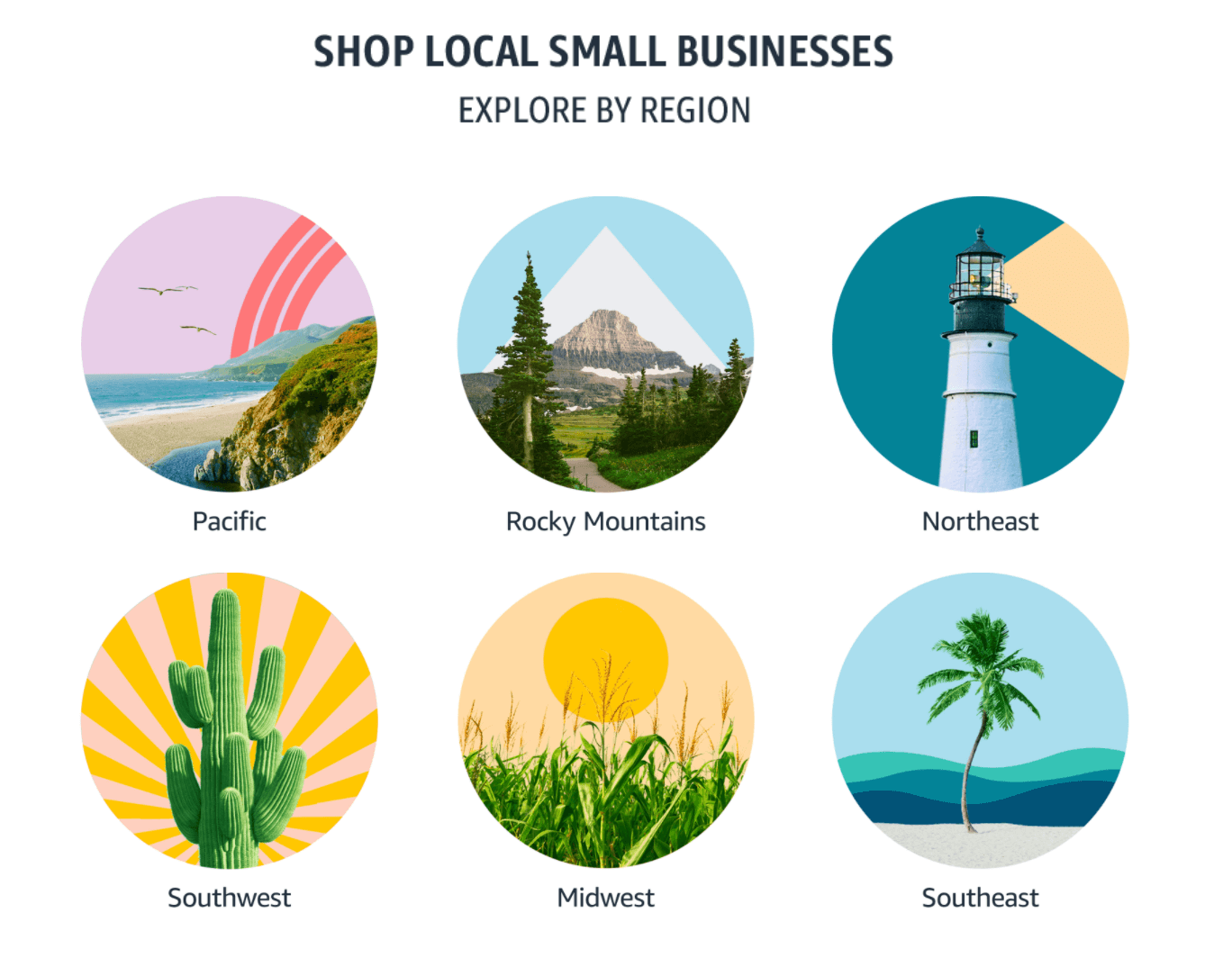
Amazon highlights brands with unique stories from each region, so customers can get to know small business owners in their area.

Support Local Makers on Amazon Handmade
You can also easily find local Amazon Handmade sellers on the Support Local Makers page.
Handmade is Amazon’s artisan-only marketplace, where business owners are dubbed “Makers”; Amazon audits Makers’ production methods to ensure all products sold on Handmade are genuinely handcrafted.
Handmade has been around since 2015, but Amazon introduced Support Local Makers, a curated Handmade shopping experience, in May of 2020 “to connect customers with local small businesses across the U.S.” as they faced the unprecedented economic impact of COVID-19.
As with the Support Small page, Support Local Makers allows customers to browse products by region — but it goes a step further by letting you filter by state of origin in the left-hand menu on search results pages. Handmade products are shipped and sold directly from Makers, so shopping within your region or state ensures the products don’t travel far.
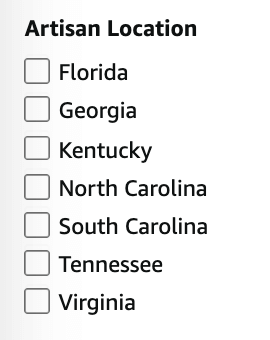
Customers can also browse high-quality handcrafted goods from featured Makers from around the U.S. that range from jewelry to home decor to toys.
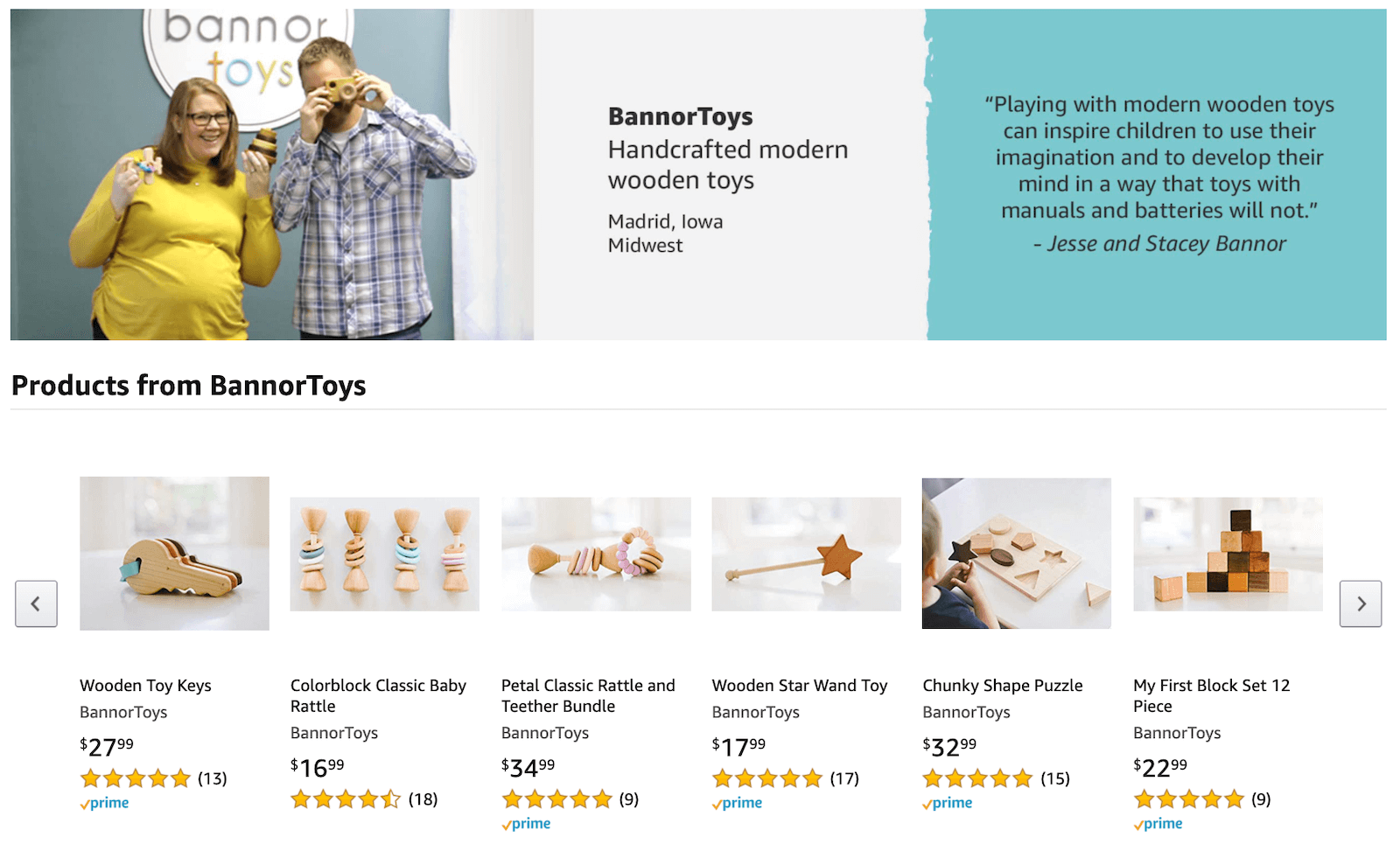
You can learn more about the Makers and their products by scrolling through Amazon’s official Handmade Instagram account or Pinterest feed.
We’re all in this together
Bottom line? It’s up to all of us to heal and protect our planet. But, since sustainability isn’t just good for the environment (it’s good for business too!), choosing to be a part of the solution is a whole lot easier.
Are you already a certified sustainable business? What initiatives did you implement? We’d love to hear about them in the comments.
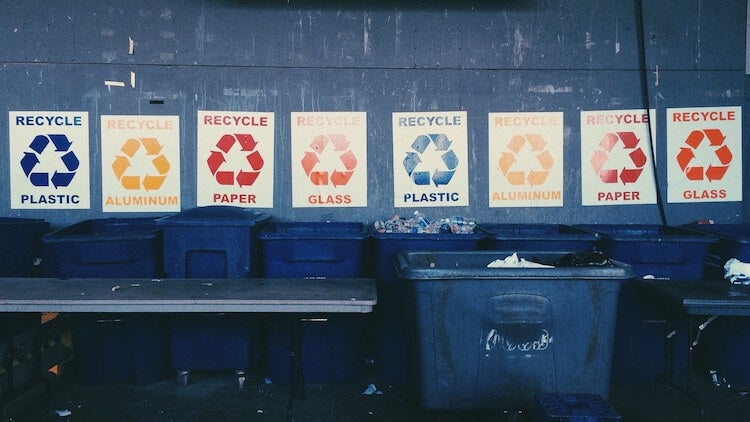
 1 Comment
1 Comment
One comment on “Be a Part of the Solution: Amazon and Sustainability”